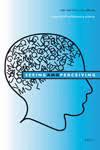Complexity of sensorimotor transformations alters hand perception
引用次数: 0
Abstract
When using tools effects in body space and distant space often do not correspond or are even in conflict. The ideomotor principle holds that actors select, initiate and execute movements by activating the anticipatory codes of the movements’ sensory effects (Greenwald, 1970; James, 1890). These may be representations of body-related effects and/or representations of more distal effects. Previous studies have demonstrated that distant action effects dominate action control, while body-related effects are attenuated (e.g., Musseler and Sutter, 2009). In two experiments, participants performed closed-loop controlled movements on a covered digitizer tablet to control a cursor on a monitor. Different gains perturbed the relation between hand and cursor amplitude, so that the hand amplitude varied and the cursor amplitude remained constant, and vice versa. Within a block the location of amplitude perturbation randomly varied (low predictability) or not (high predictability). In Experiment 1 both trajectories of hand and cursor followed the same linear path, in Experiment 2 a linear hand trajectory produced a curved cursor trajectory on the monitor. When participants were asked to evaluate their hand movement, they were extremely uncertain about their trajectories. Both, predictability of amplitude perturbation and shape of cursor trajectory modulated the awareness of one’s own hand movements. We will discuss whether the low awareness of proximal action effects originates from an insufficient quality of the humans’ tactile and proprioceptive system or from an insufficient spatial reconstruction of this information in memory.感觉运动转换的复杂性改变了手的感知
当使用工具时,身体空间和远处空间的效果往往不对应甚至冲突。意识运动原理认为,行为者通过激活动作感官效应的预期代码来选择、发起和执行动作(Greenwald, 1970;詹姆斯,1890)。这些可能是身体相关效应的表征和/或更远端效应的表征。先前的研究表明,远距动作效应主导动作控制,而身体相关效应减弱(例如,Musseler和Sutter, 2009)。在两个实验中,参与者在有盖的数字化仪平板上进行闭环控制运动,以控制显示器上的光标。不同的增益扰动了手振幅与光标振幅的关系,使手振幅变化而光标振幅保持不变,反之亦然。在一个块内,振幅扰动的位置随机变化(低可预测性)或不变化(高可预测性)。在实验1中,手和光标的轨迹都遵循相同的线性轨迹,在实验2中,手的线性轨迹在显示器上产生弯曲的光标轨迹。当参与者被要求评估他们的手部运动时,他们对自己的运动轨迹非常不确定。振幅扰动的可预测性和光标轨迹的形状都调节了一个人对自己手部运动的意识。我们将讨论对近端动作效应的低意识是否源于人类触觉和本体感觉系统的质量不足,还是源于记忆中这些信息的空间重建不足。
本文章由计算机程序翻译,如有差异,请以英文原文为准。
求助全文
约1分钟内获得全文
求助全文

 求助内容:
求助内容: 应助结果提醒方式:
应助结果提醒方式:


